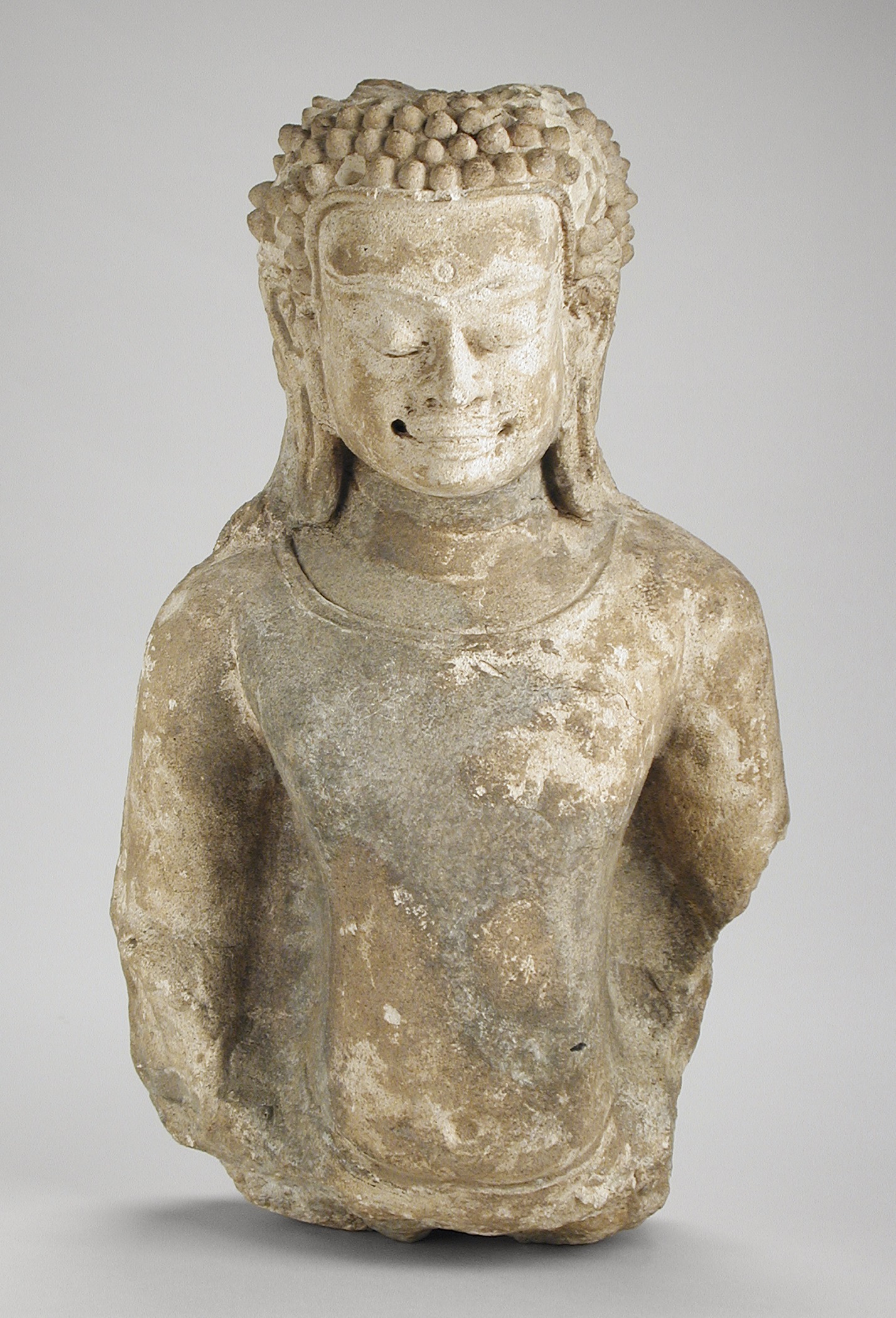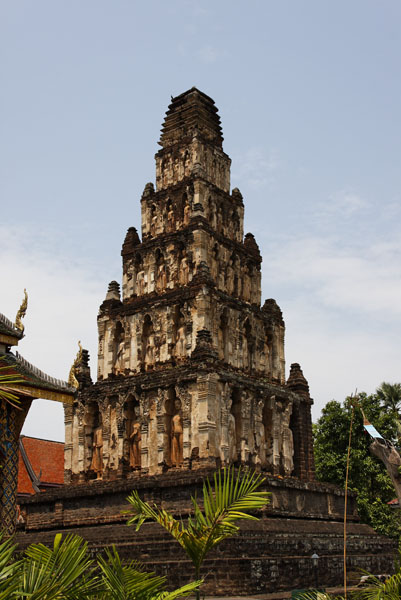|
Haripuñjaya
Haripuñjaya (Central and Northern Thai: , also spelled Haribhuñjaya) was a Mon kingdom in what is now Northern Thailand, existing from the 7th or 8th to 13th century CE. Its capital was at Lamphun, which at the time was also called Haripuñjaya. In 1292 the city was besieged and captured by Mangrai of the Tai kingdom of Lan Na. Founding According to the '' Camadevivamsa'' and " Jinakalamali" chronicles, the city was founded by a hermit named Suthep in 629 AD, and the Mon ruler of Lavo Kingdom (present-day Lopburi) sent his daughter Jamadevi to become its first queen. However, this date is now considered as too early, and the actual beginning is placed at around 750 AD. At that time, most of what is now central Thailand was under the rule of various Mon city states, known collectively as the Dvaravati kingdom. Queen Jamadevi gave birth to twins, the older succeeding her as the ruler of Lamphun, and the younger becoming ruler of neighboring Lampang. Flourishing and downfal ... [...More Info...] [...Related Items...] OR: [Wikipedia] [Google] [Baidu] |
Pali Language
Pali () is a Middle Indo-Aryan liturgical language native to the Indian subcontinent. It is widely studied because it is the language of the Buddhist ''Pāli Canon'' or ''Tipiṭaka'' as well as the sacred language of ''Theravāda'' Buddhism.Stargardt, Janice. ''Tracing Thoughts Through Things: The Oldest Pali Texts and the Early Buddhist Archaeology of India and Burma.'', Royal Netherlands Academy of Arts and Sciences, 2000, page 25. Early in the language's history, it was written in the Brahmi script. Origin and development Etymology The word 'Pali' is used as a name for the language of the Theravada canon. The word seems to have its origins in commentarial traditions, wherein the (in the sense of the line of original text quoted) was distinguished from the commentary or vernacular translation that followed it in the manuscript. K. R. Norman suggests that its emergence was based on a misunderstanding of the compound , with being interpreted as the name of a particular ... [...More Info...] [...Related Items...] OR: [Wikipedia] [Google] [Baidu] |
Jinakalamali
( my, ဇိနကာလမာလီ; th, ชินกาลมาลีปกรณ์; ; ) is a Chiang Mai chronicle that covers mostly about religious history, and contains a section on early Lan Na kings to 1516/1517. Similar period Pali chronicles include the ''Chamadevivamsa'' and the ''Mulasasana''. Originally written in Pali by a Buddhist monk, it is said to have been completed in 1527 but the oldest extant manuscript dates only to 1788. The chronicle was one of the Chiang Mai-based chronicles maintained during the Burmese rule of Lan Na (1558–1775) and it was referenced by later Burmese chronicles, most notably ''Maha Yazawin'', the standard chronicle of Toungoo Dynasty.Aung-Thwin 2005: 124–126 The oldest extant manuscript of 1788 is written in a late Khmer script, and has gone through at least a dozen revisions. It was translated to Khmer and translated "from Khmer to Thai to Pali to French and back again to Pali." The chronicle was revised at least four times du ... [...More Info...] [...Related Items...] OR: [Wikipedia] [Google] [Baidu] |
Tai Yuan
The Northern Thai people or Tai Yuan ( th, ไทยวน, ), self-designation ''khon mu(e)ang'' ( nod, , คนเมือง meaning "people of the (cultivated) land" or "people of our community") are a Tai ethnic group, native to eight provinces in Northern Thailand, principally in the area of the former kingdom of Lan Na. As a Tai group, they are closely related to Tai Lü and Tai Khün with regards to common culture, language and history as well as to Thailand's dominant Thai ethnic group (in contrast referred to as ''Siamese'' or ''Central Thai''). There are approximately 6 million Tai Yuan. Most of them live in Northern Thailand, with a small minority 29,442 (2005 census) living across the border in Bokeo Province and Sainyabuli Province and Luang Namtha Province of Laos. Their language is called Northern Thai, Lanna or ''Kham Mueang''. Exonym and endonym Central Thai may call northern Thai people and their language Thai Yuan, probably derived from Sanskrit ''yav ... [...More Info...] [...Related Items...] OR: [Wikipedia] [Google] [Baidu] |
Buddha Shakyamuni LACMA AC1993
Siddhartha Gautama, most commonly referred to as the Buddha, was a wandering ascetic and religious teacher who lived in South Asia during the 6th or 5th century BCE and founded Buddhism. According to Buddhist tradition, he was born in Lumbini, in what is now Nepal, to royal parents of the Shakya clan, but renounced his home life to live as a wandering ascetic ( sa, śramaṇa). After leading a life of begging, asceticism, and meditation, he attained enlightenment at Bodh Gaya in what is now India. The Buddha thereafter wandered through the lower Indo-Gangetic Plain, teaching and building a monastic order. He taught a Middle Way between sensual indulgence and severe asceticism, leading to Nirvana, that is, freedom from ignorance, craving, rebirth, and suffering. His teachings are summarized in the Noble Eightfold Path, a training of the mind that includes meditation and instruction in Buddhist ethics such as right effort, mindfulness, and ''jhana''. He died in Kus ... [...More Info...] [...Related Items...] OR: [Wikipedia] [Google] [Baidu] |
Lampang
Lampang, also called Nakhon Lampang ( th, นครลำปาง, ) to differentiate from Lampang province, is the third largest city in northern Thailand and capital of Lampang province and the Mueang Lampang district. Traditional names for Lampang include Wiang Lakon and Khelang Nakhon. The city is a trading and transportation center. Lampang lies north of Bangkok and southeast of Chiang Mai. Geography Lampang city is in the valley of the Wang River, bordered by the Khun Tan Range on the west and the Phi Pan Nam Range on the east. The river, a major tributary of the Chao Phraya, flows through the city. The city lies mainly on the south side of Wang River, although the old parts of the city had been originally developed in the north side of it. Nowadays, downtown Lampang has grown in the southeast of the river along Bunyawat and Pahon Yothin Roads. Climate Lampang has a relatively dry climate relative to nearby provinces. "Winter" starts after the last rains, typically ... [...More Info...] [...Related Items...] OR: [Wikipedia] [Google] [Baidu] |
Dvaravati
The Dvaravati ( th, ทวารวดี ; ) was an ancient Mon kingdom from the 7th century to the 11th century that was located in the region now known as central Thailand. It was described by the Chinese pilgrim in the middle of the 7th century as a Buddhist kingdom named "To-lo-po-ti" situated to the west of Isanapura (Cambodia) and to the east of Sri Ksetra (Burma). Dvaravati also refers to a culture, an art style, and a disparate conglomeration of principalities of Mon people. Archaeological research over the past two decades or so has revealed the presence of a "Proto-Dvaravati" period which spans the 4th to 5th centuries, and perhaps earlier. History The culture of Dvaravati was based around moated cities, the earliest of which appears to be U Thong in what is now Suphan Buri Province. Other key sites include Nakhon Pathom, Phong Tuk, Si Thep, Khu Bua and Si Mahosot, amongst others. Legends engraved on royal urns report the following kings: Suryavikrama (673-688) ... [...More Info...] [...Related Items...] OR: [Wikipedia] [Google] [Baidu] |
Jamadevi
Camadevi (also spelled Jamadevi; IPA: ʃaːmaˈdeːʋiː Pali: Cāmadevī; th, จามเทวี, , Mon: စာမ္မာဒေဝဳ, ; 7th-century – 8th-century) was the first ruler/Queen of Hariphunchai (Pali: Haribhuñjaya), which was an ancient Mon kingdom in the northern part of Thailand today. Most records of Camadevi mention her life period differently. For example: A book called ''“ Chinnakanmalipakon”'' said that she reigned in 662 for 7 years; Manit Wallipodom's research mentioned that she was born in 623, reigned in 662 for 17 years and died in 715 at the age of 92; and The legend of Camadevi translated and edited by Suttavari Suwannapat mentioned that she was born in 633, reigned in 659 up til 688 and died in 731. Early life As written in the Legend of Cāmadevivaṃsa, it was recorded that she was a scion of the ruler of Lavo Kingdom. But according to the mythology, people believe she was a daughter of a wealthy man named Inta, who lived in Nong Duu ... [...More Info...] [...Related Items...] OR: [Wikipedia] [Google] [Baidu] |


.jpg)

